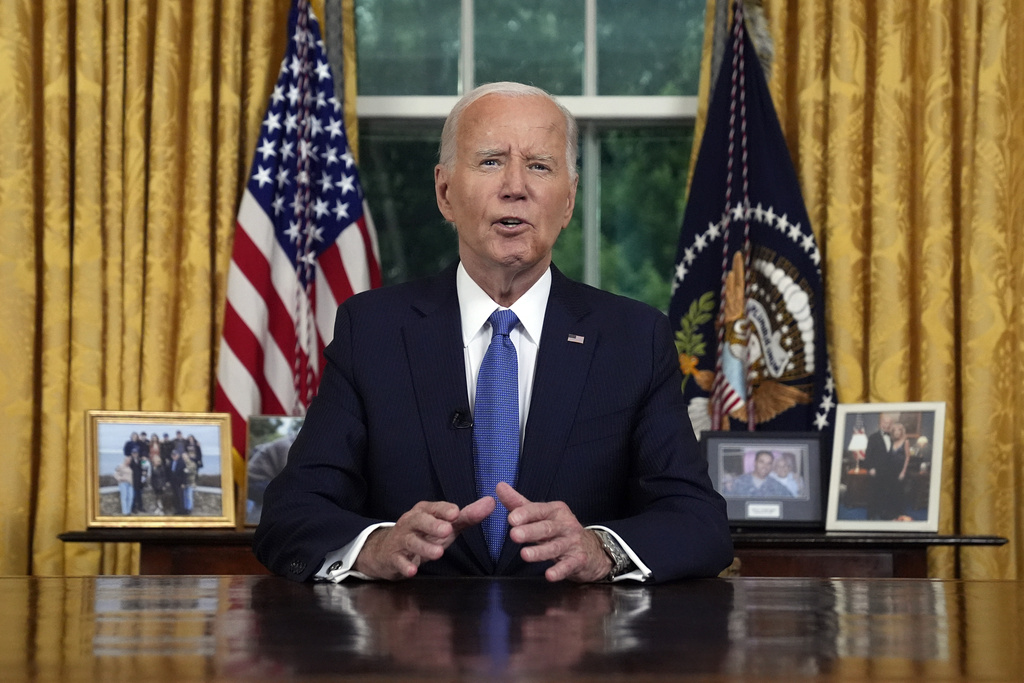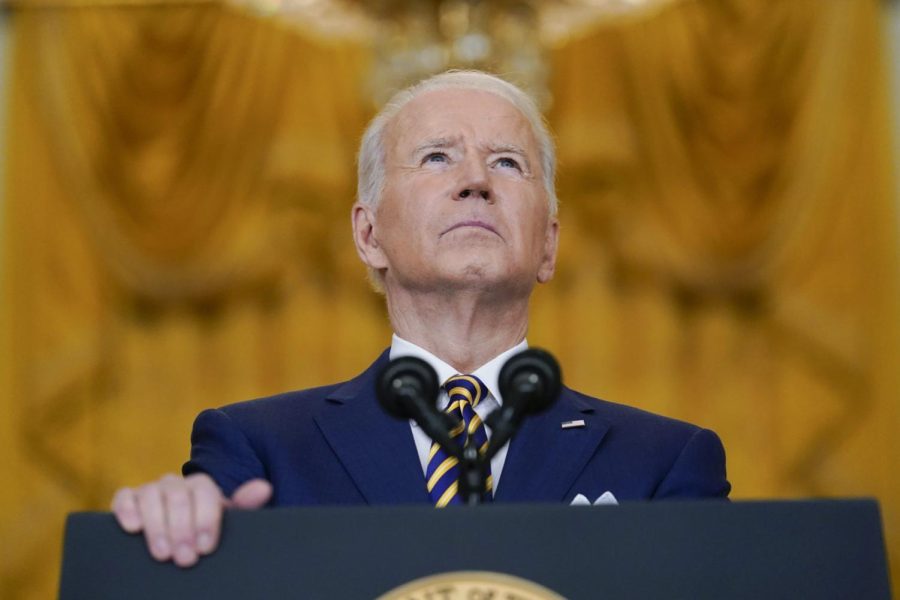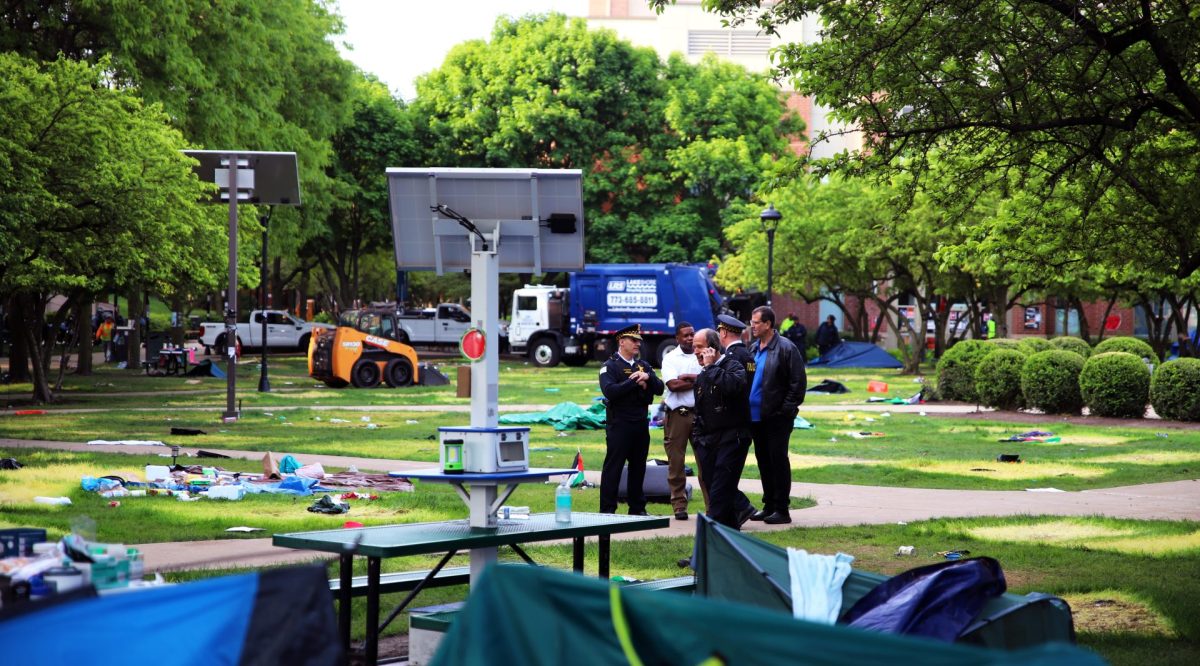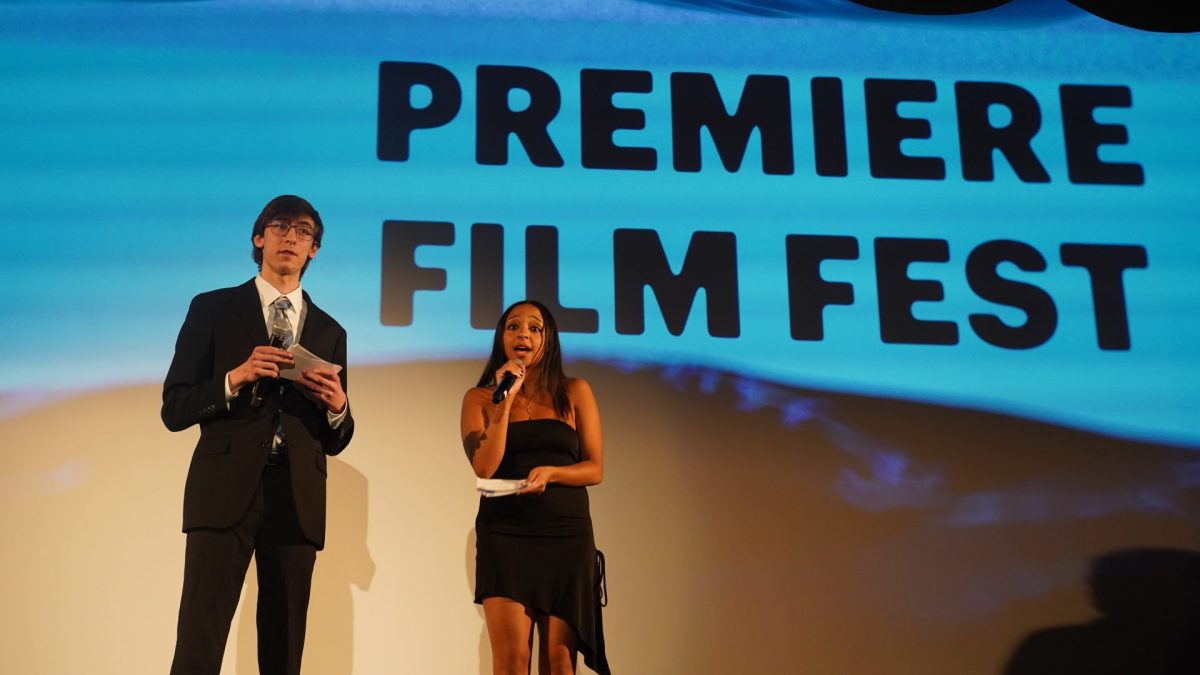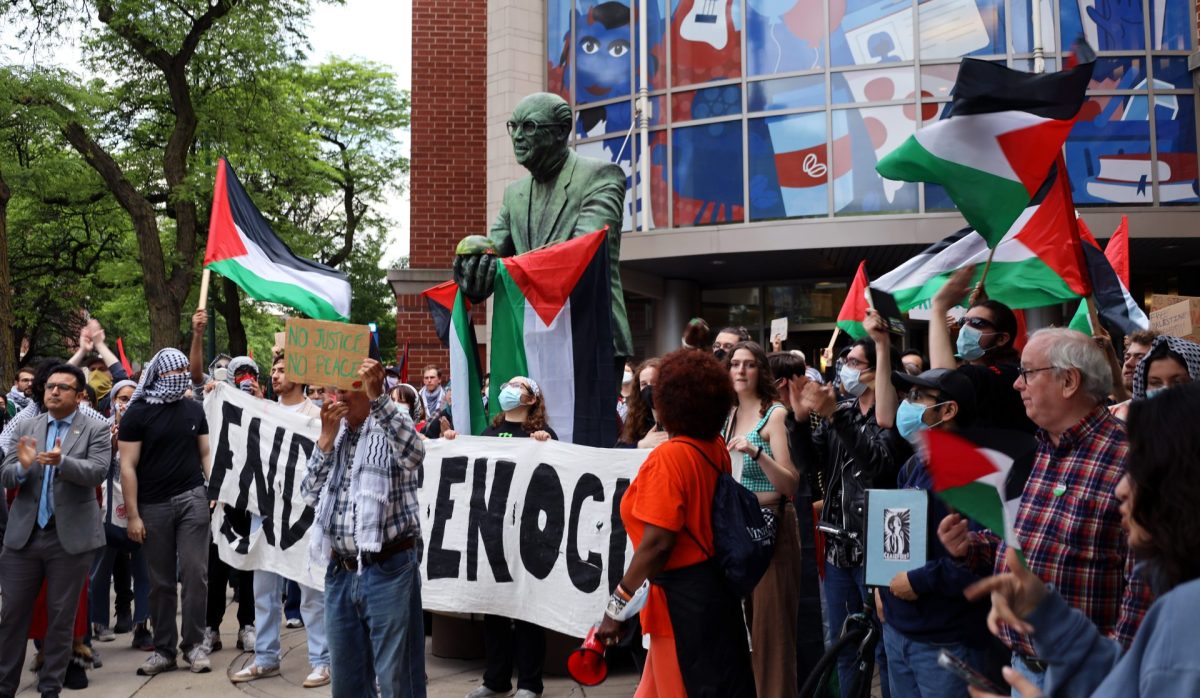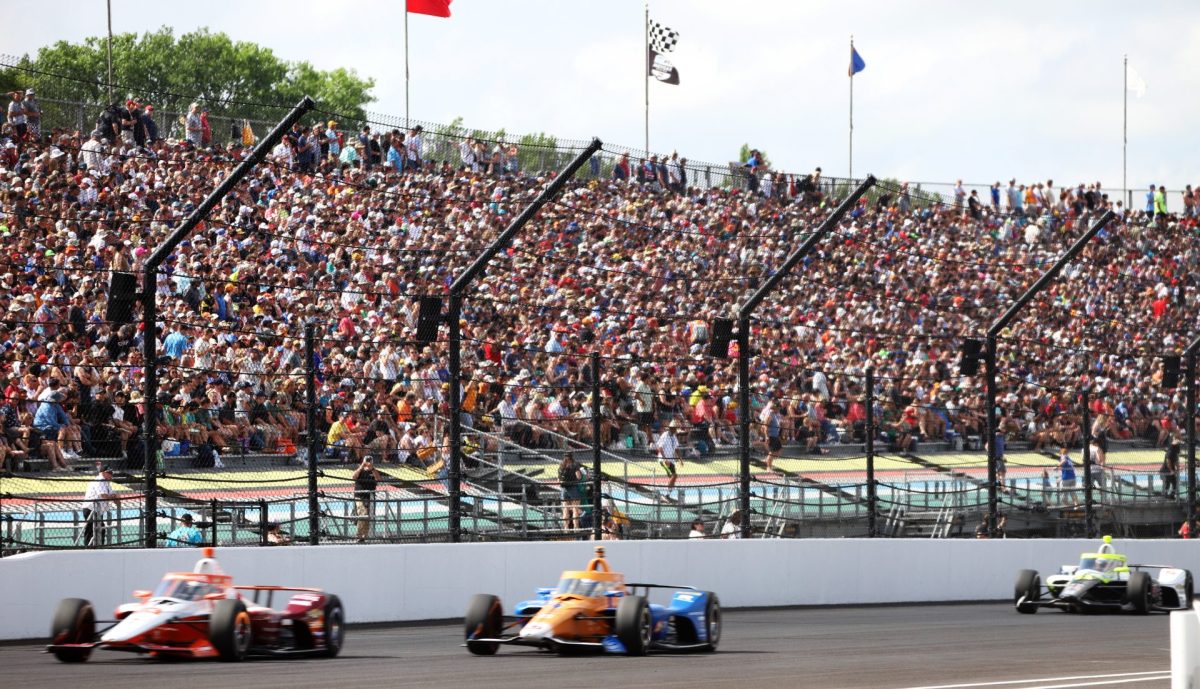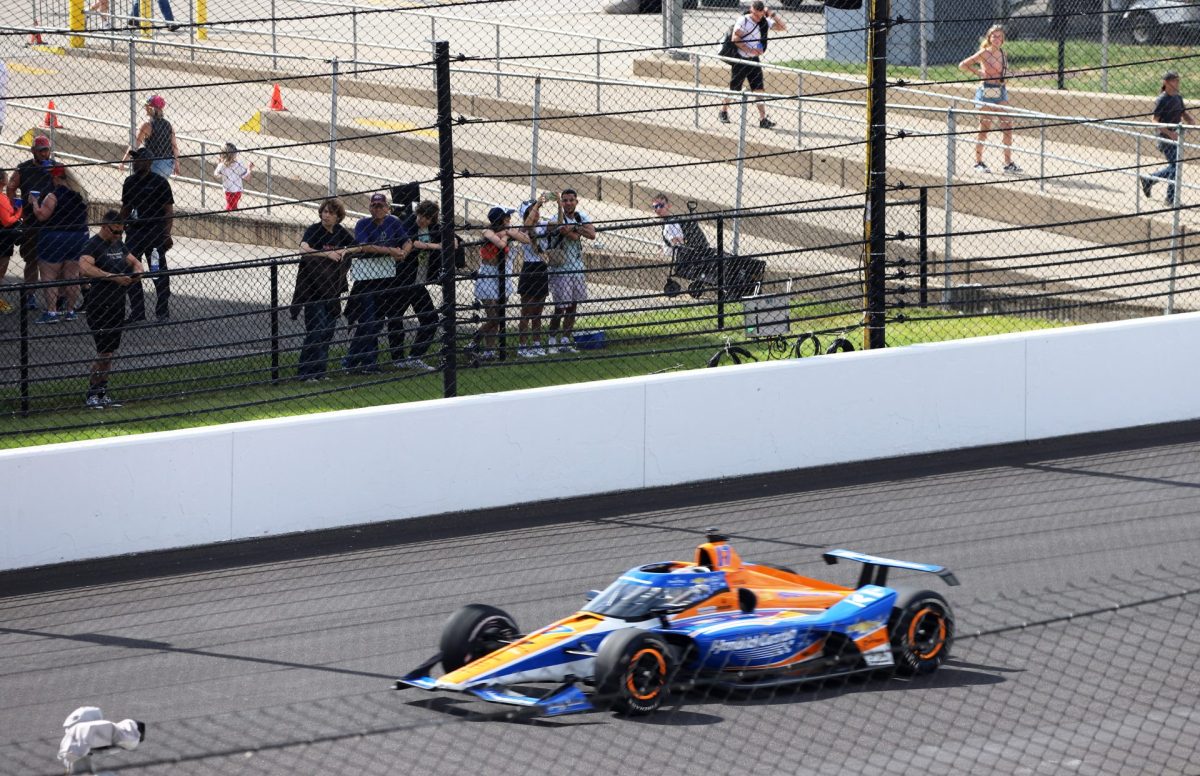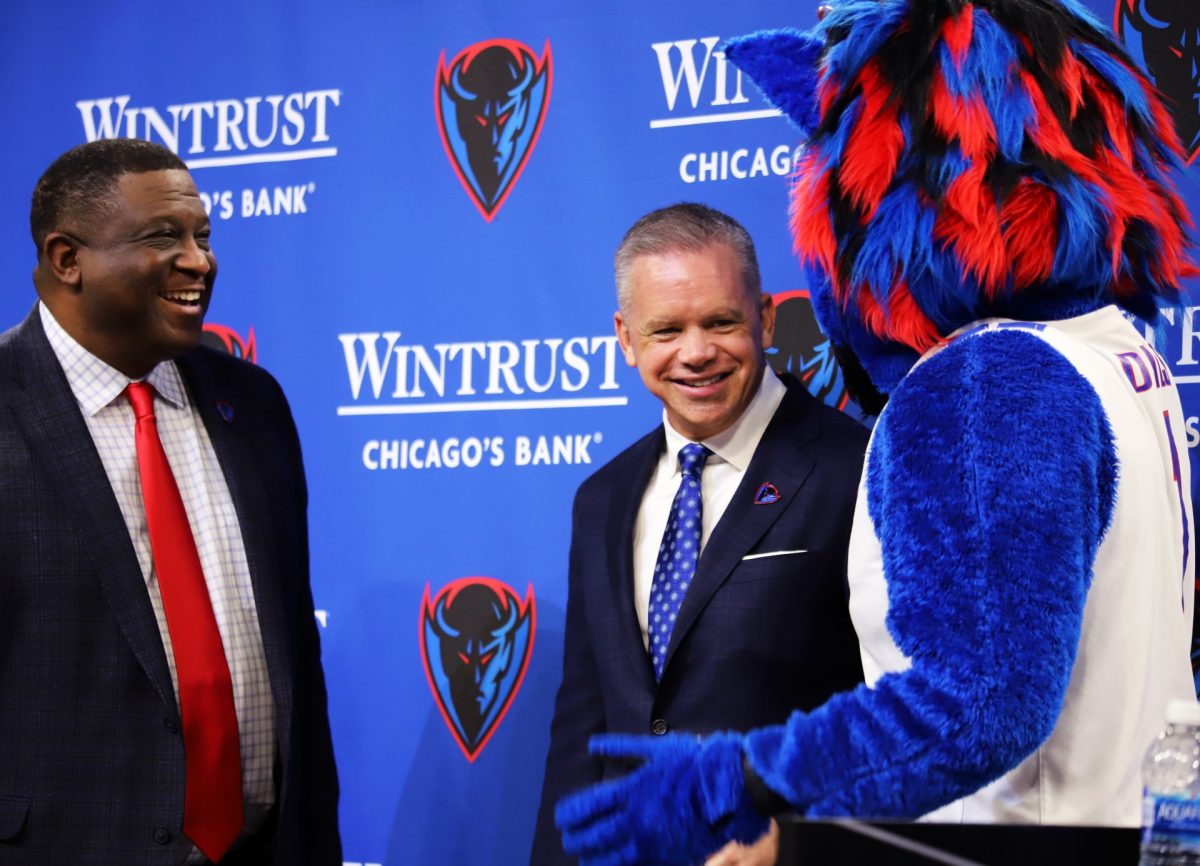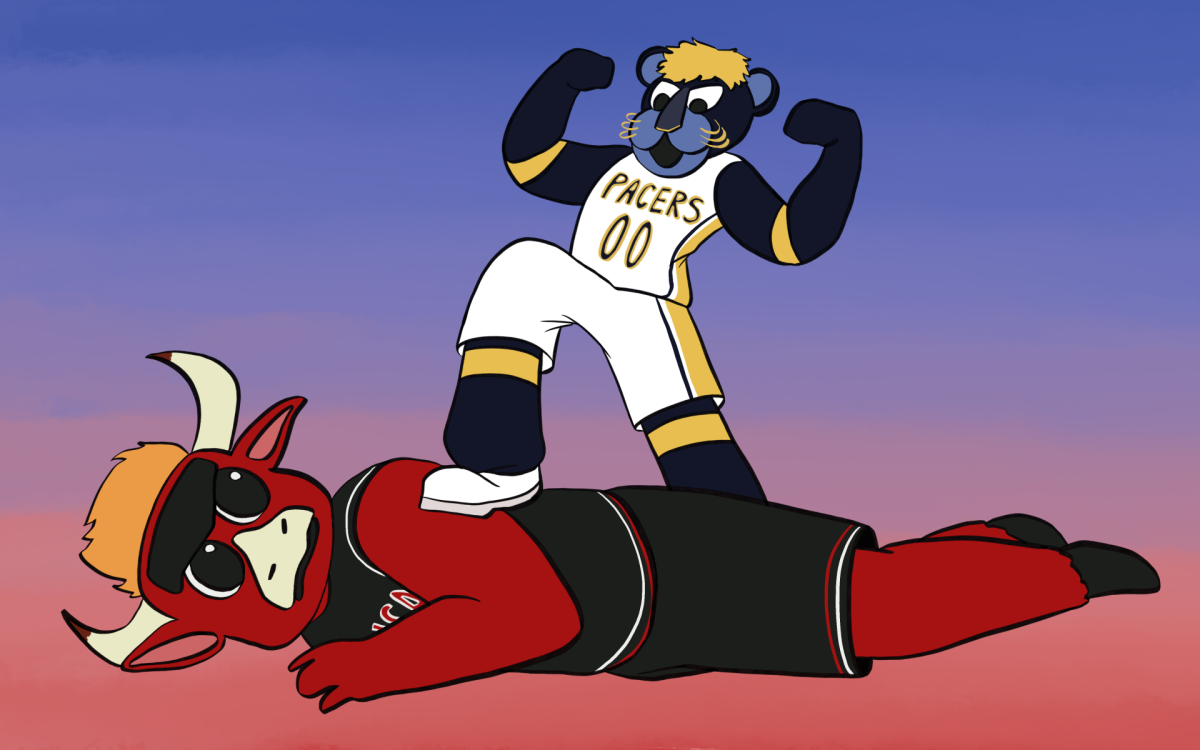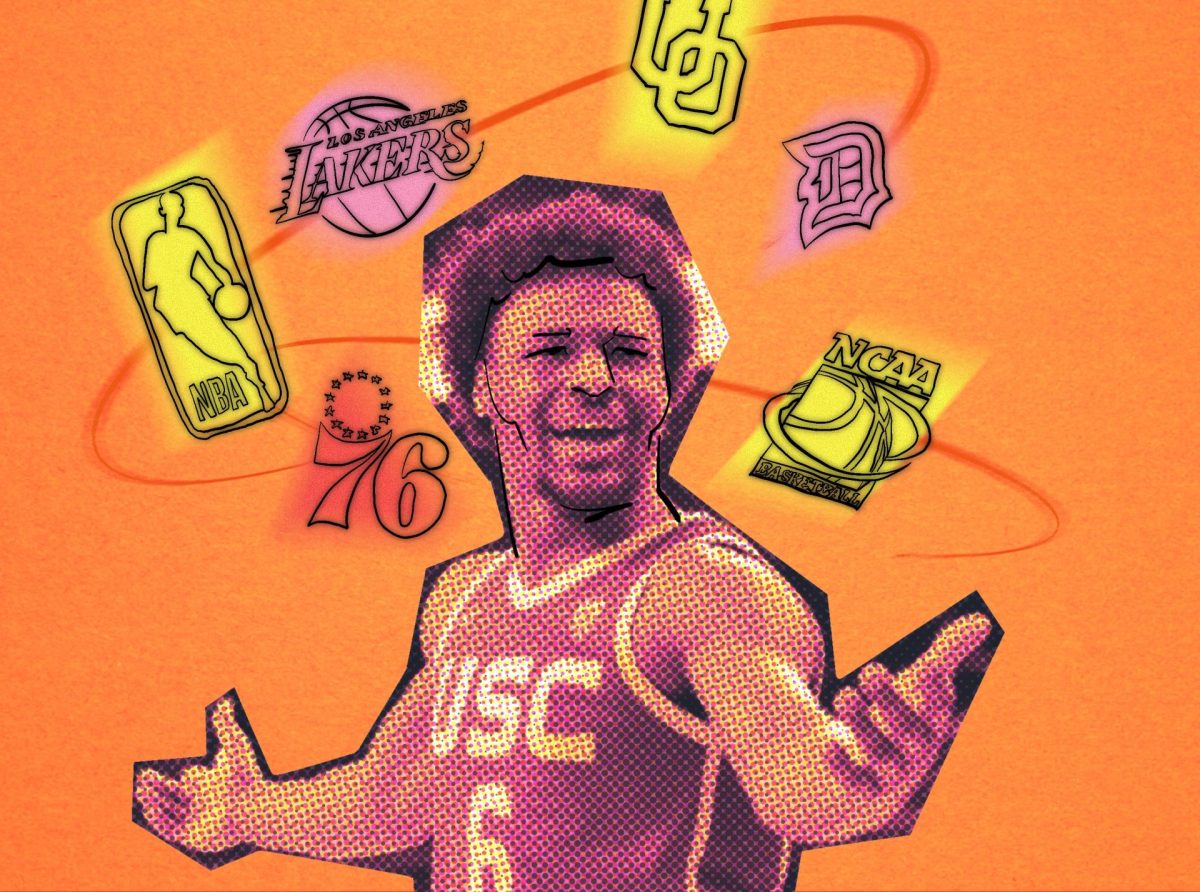Running through his array of plans and initiatives to elevate the athletics program at DePaul, an idea pops into DeWayne Peevy’s head.
“Have you seen the building?” he asks.
It could be an extra cup of coffee, excitement for his son’s Homecoming football game later that night or just who he is. Whatever the case, Peevy shows every floor, every room, every corner of the Sullivan Athletic Center. It’s more than a tour of the facility, which opened in 2000 across from the Student Center, however. It’s his vision for what’s next.
After becoming DePaul’s director of athletics, he is now a vice president of the university and recently signed an extension Sept. 12 to retain these roles at DePaul through June 2027. His mission for every student, Peevy said, is clear.
“My job is to help get that DePaul hat on that table when you’re thinking about the schools you’re considering,” he said.
Peevy has quickly made DePaul — and Chicago — his home. Originally from Birmingham, Alabama, he was a baseball player at the University of Montevallo (near his hometown) who developed exercise-induced asthma while in school.
Peevy stayed in the sports world, however, becoming the deputy director of athletics at the University of Kentucky before getting the job offer from DePaul in 2020.
Now, he says, “I’m a full-on city boy,” seeing Lincoln Park and the university’s presence in the Loop as DePaul’s most significant assets.
At the time of his hire, then-president A. Gabriel Esteban said in a statement: “From the moment I met DeWayne, I knew immediately that his integrity and passion combined with his impressive collegiate athletics experience would elevate DePaul and its student-athletes to even higher levels.”
Walking through the hallways of the athletic center, Peevy said, “I think about the fact that you’re in this dynamic city with people that really like to grind and accomplish things together. I think this is the perfect scenario.”
However, Peevy and executive associate athletics director Taylor Stapleton, who worked with Peevy at Kentucky and then followed him to DePaul, admitted they knew nothing about Lincoln Park prior to their current positions. Peevy says this presents a challenge.
“The hardest piece is getting [prospective] students to campus,” he said. “We get them to campus, and we’ve got a great shot.”
When Peevy got to DePaul, he conducted a needs assessment. Through response from faculty, staff and students, the biggest need determined was better facilities.
They then conducted a feasibility study that took 18 months of refinement. The result: the announcement of a $60 million athletics facilities project last month.
Speaking to a DePaul sports management class Wednesday, Stapleton explained why facilities are crucial for student-athletes.
He provided the example of the sole conference room that is currently in the Sullivan Athletic Center. Besides meetings, the room is used for halftime space for softball and soccer teams and as a lounge for donors. The sounds of clanking weights and upbeat music from the weight room next door penetrate its walls during meetings. This weight room also isn’t big enough for a full team. The nearby hydrotherapy equipment only works every other day.
Attached is McGrath-Phillips Arena, a practice space for almost every team on campus, but there are only three courts in the arena. As a result, Stapleton said individual training sessions are almost impossible because the schedule is gridlocked.
“We just don’t have that much space,” Stapleton said. He also pointed out the building the class was in (the athletics annex, which is a remodeled family home) also contained the entire communications, marketing and fundraising departments.
Marisa Arce, head coach of the DePaul Women’s Tennis program, believes the new athletic facility will strengthen her team’s connection.
“We would spend more time with each other if we had a space that we could spend time in,” Arce said. “You’ll see us running the back stairs in the athletic center … because we have nowhere else to condition.”
The new facility will provide locker rooms for every DePaul athletics program, regardless of where they play their home games.
“We had to determine our big priorities,” Stapleton said. “What achieves the most with the least impact on student’s spaces, community spaces or academic spaces?”
As he rounds a corner, Peevy reflects on his role at the university. As a vice president at DePaul, he feels that being a part of the president’s cabinet means he can carry out the interests of every student.
In his role as vice president, he said, “I can just share my experiences and my thoughts that have nothing to do with athletics for the betterment of the entire university.”
On the athletics side, however, Peevy believes that an elite program is essential to increase enrollment as universities nationwide struggle to meet their quotas. The National Student Clearinghouse Research Center estimates that by the end of the school year in the spring of 2023, national undergraduate student enrollment fell almost 9% since the spring of 2019.
“The data shows that going to private schools if you got a team that’s in the NCAA Tournament … in a five-year period, you’re talking about a 4 to 6% increase in enrollment,” Peevy said. “That’s 1,000 people for us. When you’re talking about $60 million, that’s a real investment.”
The largest example of this today is the University of Colorado’s $7.2 million increase in enrollment revenue after the arrival of NFL legend Deion Sanders as the head coach of the football program this summer. Peevy explained it is this kind of winning culture Sanders introduced to his own school that puts that hat on the table for prospective students.
“This facility project, there’s no way I would have pushed forward if I didn’t feel like it had a major impact on net tuition revenue, which is our biggest and scariest problem going ahead,” Peevy said.
Peevy knows the new practice facility is not the “end all be all” to fix DePaul’s financial situation, but he says it’s the start the university needs to bump the nationwide downward trend.
“We’ve got to get past just making do and providing that level of excellence that we expect,” Stapleton said.
Peevy talks about one of his fondest moments at DePaul so far. He was in California for a Fox Television meeting this year and took an unplanned detour to San Francisco to speak to an alumni group.
He told the group about the impact of DePaul’s Christmas Day game against Creighton in 2022, the most-watched men’s college basketball game ever on Fox with 3 million viewers.
To get that kind of viewership consistently, Peevy believes DePaul’s presence needs to be felt, which was why he was in San Francisco in the first place.
“But then the second thing is really that affinity buildup, like ‘I want to be there … look at the school spirit, look at the campus atmosphere,’” Peevy said. “It’s that coming together, that gathering place, that I feel like our young people have missed … coming together and cheering for one thing because that’s your school.”
No matter where he goes, DePaul’s logo is always present on Peevy’s clothing. He encounters fans whose parents or grandparents brought them to DePaul games when they were children, or maybe they went to DePaul themselves. He says interacting with them in his community, whom he’s only known for a few years, makes his goals even clearer.
“We need to reconnect with our alumni,” Peevy said. “That’s a big piece for everyone involved from the education side. If we’re trying to do this billion dollar campaign, we’ve got to connect with people that care about us.”
Peevy feels that the $60 million dollar campaign might lead to more attention, bringing on more real dollars. Crucial to this investment, Peevy said, are the benefits to every team on campus.
“It’s amazing how [Peevy] makes us feel seen and important,” Arce said. “We don’t bring in any money, we don’t even sell tickets … but from day one, he’s helped us in literally every different way.”
Peevy walks through the weight room and details not what the room’s function is now, but what it will be in the coming years. Switching to the present, Peevy speaks about the upcoming season.
The women’s basketball team has the most depth Peevy believes he’s seen during his tenure. He thinks head coach Doug Bruno’s bench will be more capable backing up the starters, allowing for the higher-intensity approach Bruno is known for. The halls of the athletic center are brighter.
“I saw [Bruno] today,” Peevy said. “He’s got his jacket on today, we’ve got visitors coming in and he’s just smiling and whistling Dixie and I love it. He is a 37th year coach with more energy than anybody else here.”
Returning to his office as his day winds down, Peevy has a football game to catch, but he is in no rush.
“It’s easy for me to work hard, to be sitting here on a Friday afternoon,” Peevy says. “I could talk to you all day because this has got it, this is so earned, and it’s so important to so many people.”



